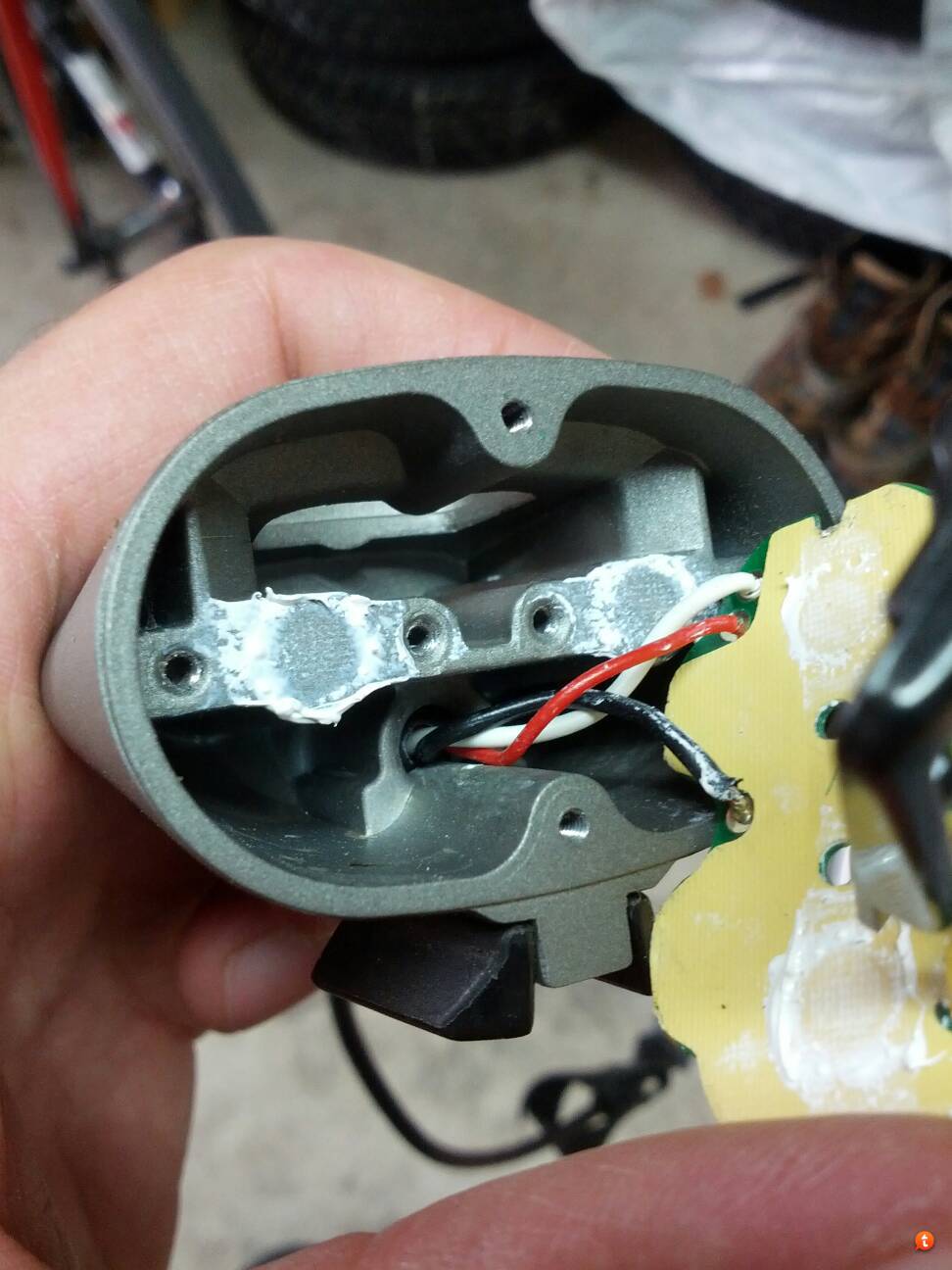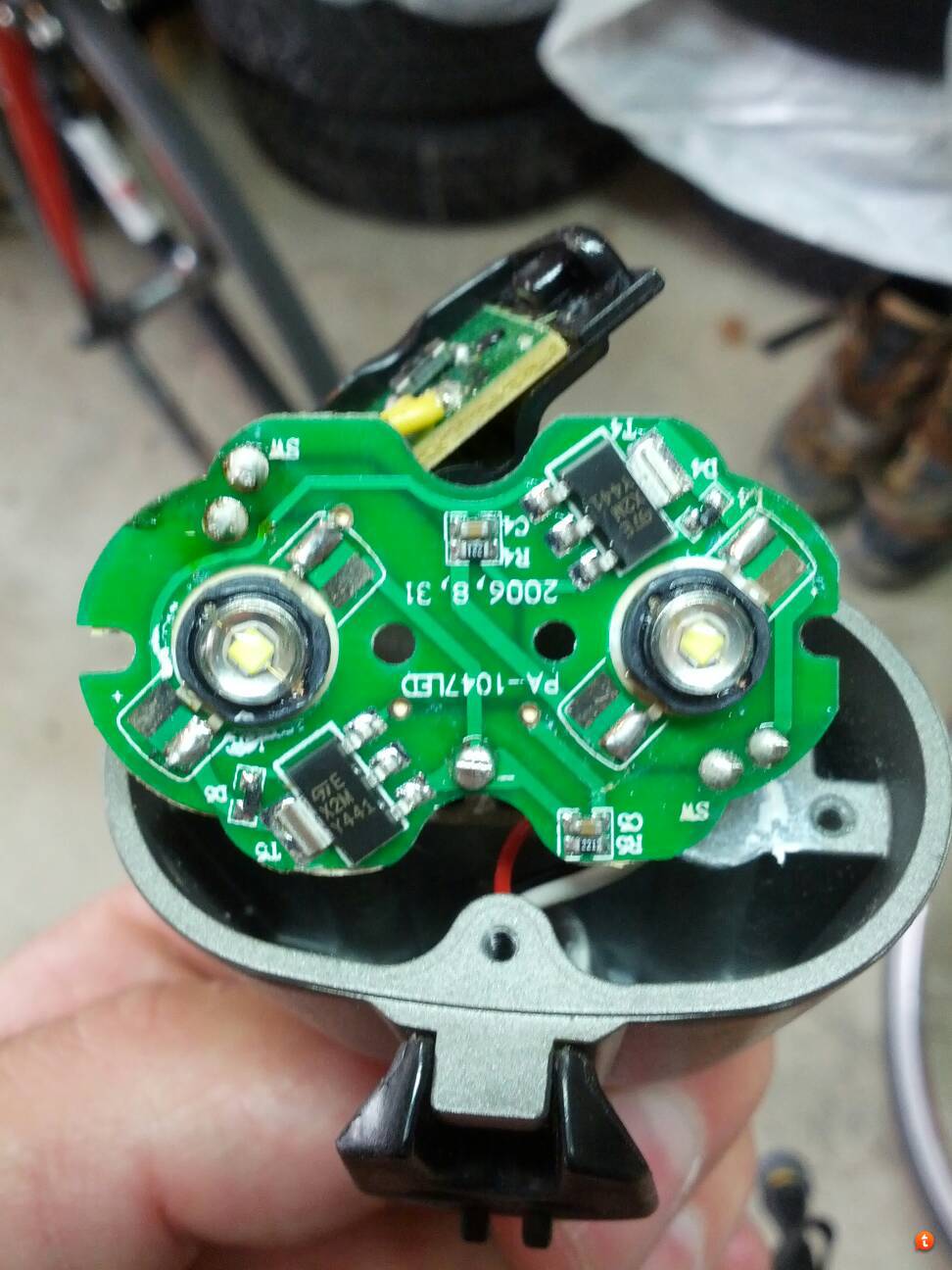Hello all. This is my first post here. I found this site when searching for possible mods for my Princeton Tec Switchback 2. I haven't had much luck finding anybody who has done the same. What I wanted to do was to replace the leds in this light but I guess it is not that simple. Anybody done anything similar?
I have opened up the head unit and both leds are on a single board. Specs on this system are hard to come by, but I think that the leds are Luxeon III. I think I could remove the board entirely and fit two star leds in there instead but then the question is what do I do about a driver? There is not much space in there. And I have no idea what the battery is capable of. Or if cooling would be sufficient - the heatsink does not have a lot of contact area behind the leds.
Any suggestions are welcomed. I will post some pics to give an idea of what the housing looks like.
I have opened up the head unit and both leds are on a single board. Specs on this system are hard to come by, but I think that the leds are Luxeon III. I think I could remove the board entirely and fit two star leds in there instead but then the question is what do I do about a driver? There is not much space in there. And I have no idea what the battery is capable of. Or if cooling would be sufficient - the heatsink does not have a lot of contact area behind the leds.
Any suggestions are welcomed. I will post some pics to give an idea of what the housing looks like.



